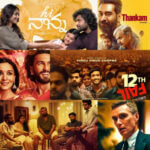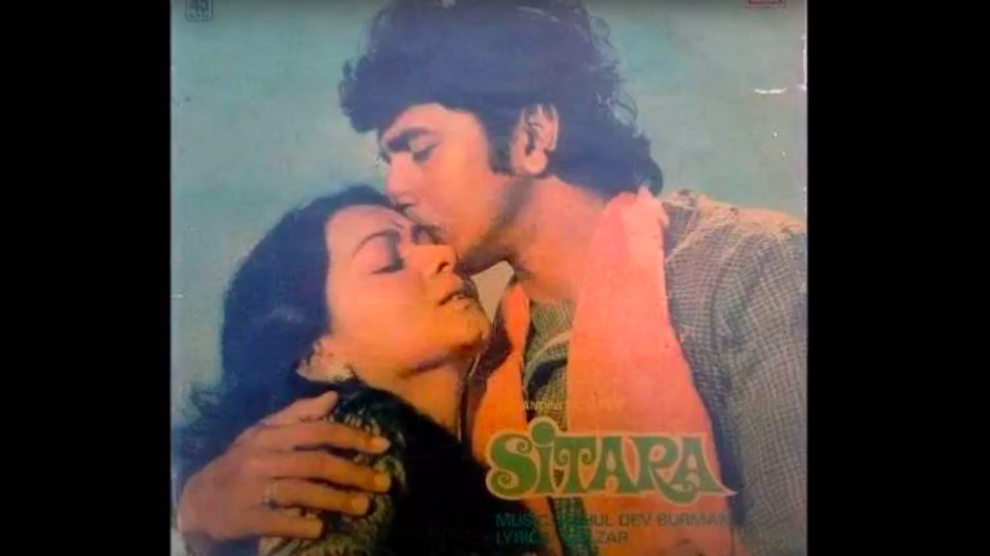If you think of it, there have come many songs in the past depicting the little to big desires of the protagonist(s) in the films. Be it snatching the moon and the stars from the sky, talking about how little they have and only a little more they need to be happy or dreaming about owning a place they could call their home, the protagonists have expressed their desires sometimes innocently, sometimes lovingly and sometimes unabashedly.
In the year 1980, Gulzar’s assistant Meraj donned the director’s hat and made a film titled Sitara. It was a remake of a Telugu film Seetamalakshmi (1978). The original was directed by K. Viswanath and starred Talluri Rameshwari and Chandramohan. Its remake had Zarina Wahab and Mithun Chakraborty in the lead as a couple madly in love since childhood. They want to marry each other and to better their economic conditions, they go to Bombay (now Mumbai). Naturally, Gulzar has written the lyrics of the film which boasts of beautiful songs like “Ye Saaye Hain” and “Saath Saath Tum Chalo” etc. Music is by the legendary Rahul Dev Burman, fondly known as Pancham Da. Gulzar and Pancham’s collaboration is one of the rare lyricist- music composer collaborations in Hindi cinema which began with Parichay (1972). I have already mentioned some beautiful songs of Sitara, but my personal favourite is “Thodi Si Zameen Thoda Aasmaan” sung by the nightingale Lata Mangeshkar and the iconic Bhupinder Singh. Written by Gulzar and composed by R.D. Burman, this song expresses the desires of the two protagonists Dhaniya and Kundan who love each other dearly.
There is no need to introduce the phenomenon that Gulzar is. His poetry, stories, films, TV serials and even plays have left a deep impact on us and continue to make us fall in love with his craft every now and then. His lyrics stand out from the rest and it’s one of the many reasons why he is loved even today.
This piece is my attempt to break down the lyrics of this lovely number to understand its meaning.
Thodi si zameen, thoda aasmaan
Tinkon ka bas ek aashiyaan
Thodi si zameen…
The opening lines or the mukhra of the song clearly sets the stage for us and tells us the intention of our protagonists Dhaniya and Kundan. Both of them want to marry each other and have already dreamed of their future ahead. No, they don’t want expensive bungalow and car and all the luxury for themselves, instead they just want a little piece of land and sky which they can call their own. The sky here can also mean the roof above their heads. Further, the couple reveals to us that they don’t need a house with marble floors and attractive walls as they just dream of a small home which they will make themselves with all the hard work needed. They live in a village and they are happy in their prosperous life together.
Maanga hai jo tumse wo
Zyaada to nahin hai
Dene ko to jaan de dein
Vaada to nahin hai
Koi tere vaadon pe
Jeeta hai kahaan?
In the first stanza or antara, Dhaniya is the one asking Kundan to push forward and fulfil their dream of a “aashiyaan”. She tells her that she hasn’t asked for the moon and the stars but just a little home. Kundan listens to her and as he loves her so much, he can even give his life for her. But reality hits both of them quite hard. Their dream is affected by their economic conditions. Thus, Kundan, though claims to even give his life for his beloved Dhaniya, he also tells her that he can’t fully promise to give her a home. Dhaniya then tells him, which can also be more of an assurance for Kundan that he doesn’t need to worry about it as no one lives their life on promises as they can be easily broken or remain unfulfilled. In this way, she relieves him from the burden of the promise.
Mere ghar ke aangan mein
Chhota sa jhoola ho
Saundhi-saundhi mitti hogi
Lepa hua choolha ho
Thodi thodi aag hogi
Thoda sa dhuaan
In the next stanza, Kundan expresses his idea of the home where there should be a swing in the house’s courtyard. Often, the swing also refers to the happiness and satisfaction. Here, Gulzar’s poetry and imagery is such that one can’t help but imagine a home with a courtyard where a couple must be swinging on a swing and laughing together. Kundan expresses this very desire to Dhaniya who further adds her wishes of the rain in the courtyard which would give birth to the petichor – smell of rain when it falls on the dry ground. Rain is also the symbol of hope. Dhaniya also wishes to have a small stove made from the same soil that is drenched in rain. Next, Kundan adds that a little amount of fire and smoke is also needed in the home. Needless to say, the mentions of stove, fire and smoke refers to the hunger that also needs to be satiated. Food is the basic necessity for them, equally important like home.
Raat kat jaayegi to
Kaise din bitaayenge?
Baajre ke kheton mein
Kauvve udaayenge
Baajre ke sitton jaise
Bete ho jawaan
The final stanza highlights the couple’s desire to spend their days in the millet field. Kundan asks Dhaniya about their routine of the day to which she mischievously replies that both of them can spend their days as scarecrows shooing off the crows in the millet field. Here, it also describes Dhaniya’s willingness to overcome any obstacle together that comes their way. The mention of the millet field instills in Kundan the desire to have kids so strong like the cob of the millet. Clearly, he has completely envisioned their future together and has made proper plans accordingly.
Through this song, Gulzar has beautifully portrayed the life of the villagers and how they find happiness in little things. Kundan and Dhaniya portray the characters that are affected by their circumstances but their never say die attitude keeps them going amidst all the difficulties. Gulzar’s use of imagery in this poetic composition is sure to make us completely fall in love with these characters and somewhere in our heart, we also wish that their dream house manifests itself in reality.















Add Comment